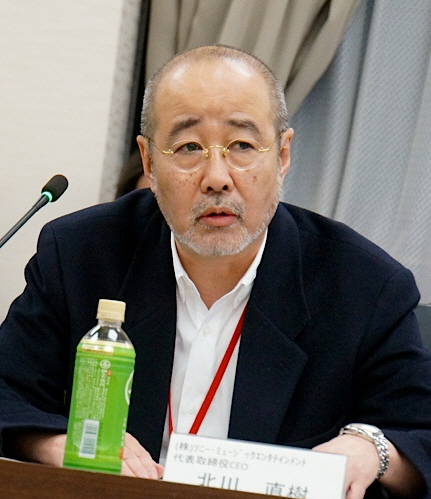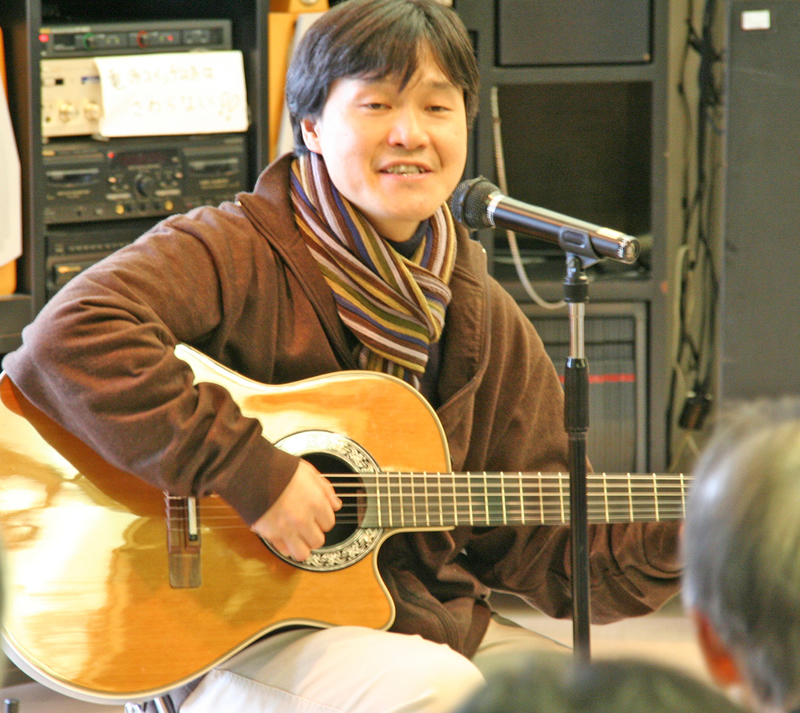|
Week End (X Japan Song)
"Week End" is a single released by X Japan (then named X) on April 21, 1990. Summary Differences between this single edit and the album edit, found on '' Blue Blood'', include an alternate guitar solo and an additional piano bridge. The B-side is a live performance of "Endless Rain" recorded on February 4, 1990 at the Nippon Budokan. A live performance of "Week End" was included as the B-side of their 1996 single " Crucify My Love". Commercial performance The song reached number 2 on the Oricon charts, and charted for 16 weeks. In 1990, with 291,440 copies sold was the 32nd best-selling single of the year, being certified Gold by RIAJ. Track listing Personnel ;X * Toshi – vocals *Pata – guitar * hide – guitar *Taiji – bass *Yoshiki Yoshiki is a masculine Japanese given name. Possible writings Yoshiki can be written using many different combinations of kanji characters. Here are some examples: *義樹, "justice, tree" *義基, "justice, foundation" *義機, "jus ... [...More Info...] [...Related Items...] OR: [Wikipedia] [Google] [Baidu] |
X Japan
was a Japanese rock band from Chiba, formed in 1982 by drummer and pianist Yoshiki and lead vocalist Toshi. Starting as a predominantly power/speed metal band with heavy symphonic elements, they later gravitated towards a progressive sound with an emphasis on ballads. Besides being one of the first Japanese acts to achieve mainstream success while on an independent label, the group is widely credited as one of the pioneers of visual kei, a movement among Japanese musicians comparable to Western glam. Originally named , they released their debut album ''Vanishing Vision'' (1988) on Yoshiki's own Extasy Records one year after finalizing their line-up including bassist Taiji, lead guitarist Hide and rhythm guitarist Pata. They achieved breakthrough success in 1989 with the release of their second and major debut album '' Blue Blood''. Following 1991's '' Jealousy'', Taiji left the band in early 1992. He was replaced by Heath and the group changed their name to X Japan b ... [...More Info...] [...Related Items...] OR: [Wikipedia] [Google] [Baidu] |
Recording Industry Association Of Japan
The is an industry trade group composed of Japanese corporations involved in the music industry. It was founded in 1942 as the Japan Phonogram Record Cultural Association, and adopted its current name in 1969. The RIAJ's activities include promotion of music sales, enforcement of copyright law, and research related to the Japanese music industry. It publishes the annual ''RIAJ Year Book'', a statistical summary of each year's music sales, as well as distributing a variety of other data. Headquartered in Minato, Tokyo, the RIAJ has twenty member companies and a smaller number of associate and supporting members; some member companies are the Japanese branches of multinational corporations headquartered elsewhere. The association is responsible for certifying gold and platinum albums and singles in Japan. RIAJ Certification In 1989, the Recording Industry Association of Japan introduced the music recording certification systems. It is awarded based on shipment figures of com ... [...More Info...] [...Related Items...] OR: [Wikipedia] [Google] [Baidu] |
Songs About Suicide
A song is a musical composition intended to be performed by the human voice. This is often done at distinct and fixed pitches (melodies) using patterns of sound and silence. Songs contain various forms, such as those including the repetition and variation of sections. Written words created specifically for music, or for which music is specifically created, are called lyrics. If a pre-existing poem is set to composed music in classical music it is an art song. Songs that are sung on repeated pitches without distinct contours and patterns that rise and fall are called chants. Songs composed in a simple style that are learned informally "by ear" are often referred to as folk songs. Songs that are composed for professional singers who sell their recordings or live shows to the mass market are called popular songs. These songs, which have broad appeal, are often composed by professional songwriters, composers, and lyricists. Art songs are composed by trained classical composers fo ... [...More Info...] [...Related Items...] OR: [Wikipedia] [Google] [Baidu] |
Songs Written By Yoshiki (musician)
A song is a musical composition intended to be performed by the human voice. This is often done at distinct and fixed pitches (melodies) using patterns of sound and silence. Songs contain various forms, such as those including the repetition and variation of sections. Written words created specifically for music, or for which music is specifically created, are called lyrics. If a pre-existing poem is set to composed music in classical music it is an art song. Songs that are sung on repeated pitches without distinct contours and patterns that rise and fall are called chants. Songs composed in a simple style that are learned informally "by ear" are often referred to as folk songs. Songs that are composed for professional singers who sell their recordings or live shows to the mass market are called popular songs. These songs, which have broad appeal, are often composed by professional songwriters, composers, and lyricists. Art songs are composed by trained classical compo ... [...More Info...] [...Related Items...] OR: [Wikipedia] [Google] [Baidu] |
Japanese-language Songs
is spoken natively by about 128 million people, primarily by Japanese people and primarily in Japan, the only country where it is the national language. Japanese belongs to the Japonic or Japanese- Ryukyuan language family. There have been many attempts to group the Japonic languages with other families such as the Ainu, Austroasiatic, Koreanic, and the now-discredited Altaic, but none of these proposals has gained widespread acceptance. Little is known of the language's prehistory, or when it first appeared in Japan. Chinese documents from the 3rd century AD recorded a few Japanese words, but substantial Old Japanese texts did not appear until the 8th century. From the Heian period (794–1185), there was a massive influx of Sino-Japanese vocabulary into the language, affecting the phonology of Early Middle Japanese. Late Middle Japanese (1185–1600) saw extensive grammatical changes and the first appearance of European loanwords. The basis of the standard dialect moved f ... [...More Info...] [...Related Items...] OR: [Wikipedia] [Google] [Baidu] |
1990 Singles
Year 199 ( CXCIX) was a common year starting on Monday (link will display the full calendar) of the Julian calendar. At the time, it was sometimes known as year 952 '' Ab urbe condita''. The denomination 199 for this year has been used since the early medieval period, when the Anno Domini calendar era became the prevalent method in Europe for naming years. Events By place Roman Empire * Mesopotamia is partitioned into two Roman provinces divided by the Euphrates, Mesopotamia and Osroene. * Emperor Septimius Severus lays siege to the city-state Hatra in Central-Mesopotamia, but fails to capture the city despite breaching the walls. * Two new legions, I Parthica and III Parthica, are formed as a permanent garrison. China * Battle of Yijing: Chinese warlord Yuan Shao defeats Gongsun Zan. Korea * Geodeung succeeds Suro of Geumgwan Gaya, as king of the Korean kingdom of Gaya (traditional date). By topic Religion * Pope Zephyrinus succeeds Pope Victor I, as ... [...More Info...] [...Related Items...] OR: [Wikipedia] [Google] [Baidu] |
1989 Songs
File:1989 Events Collage.png, From left, clockwise: The Cypress structure collapses as a result of the 1989 Loma Prieta earthquake, killing motorists below; The proposal document for the World Wide Web is submitted; The Exxon Valdez oil tanker runs aground in Prince William Sound, Alaska, causing a large oil spill; The Fall of the Berlin Wall begins the downfall of Communism in Eastern Europe, and heralds German reunification; The United States invades Panama to depose Manuel Noriega; The Singing Revolution led to the independence of the Baltic states of Estonia, Latvia, and Lithuania from the Soviet Union; The stands of Hillsborough Stadium in Sheffield, Yorkshire, where the Hillsborough disaster occurred; Students demonstrate in Tiananmen Square, Beijing; many are killed by forces of the Chinese Communist Party., 300x300px, thumb rect 0 0 200 200 1989 Loma Prieta earthquake rect 200 0 400 200 World Wide Web rect 400 0 600 200 Exxon Valdez oil spill rect 0 200 300 400 1 ... [...More Info...] [...Related Items...] OR: [Wikipedia] [Google] [Baidu] |
Neko Saito
, better known by his stage name , is a Japanese violinist, conductor, composer and music arranger. Saito is the leader of the Saito Neko Quartet, and is known for his many collaborations with musician Ringo Sheena. Biography Saito began playing the violin at the age of three, and in 1966 made his first appearance on the NHK television show ''Violin no Okeiko'' at the age of seven. In 1975, he began attending the Tokyo University of the Arts associated music high school, and in 1978 entered the university itself, majoring in composition. He joined the string ensemble Pivot while at university, and began working as the assistant of Hideo Ichikawa in 1979. From 1984, Saito worked as a violinist for the tours of musicians Akiko Kobayashi and Kosetsu Minami, and in 1987 began work as a commercial jingle producer. In 1988, Saito formed the Saito Neko Quartet. They released the album ''Friendly Games'' in 1990. In 1992, Saito released an album of classical music, ''Hajimete no Class ... [...More Info...] [...Related Items...] OR: [Wikipedia] [Google] [Baidu] |
Taiji (musician)
, also known mononymously as Taiji, was a Japanese musician and songwriter. He is best known as the former bassist of the rock band X. X rose to prominence in the late 1980s and early 1990s, credited as founders of the Japanese visual kei movement. After leaving X in January 1992, Taiji went on to work with many other bands, including Loudness and D.T.R. Early life Taiji Sawada was born in Ichikawa, Chiba, on July 12, 1966. He was the second son of three children. His younger sister Masayo is a singer known as Sister MAYO. When Taiji was two years of age, he shoved his hand into a machine in a factory where his parents worked, resulting in a first joint cut on the middle finger, but luckily, it was not too serious. In 1974, at age eight, Taiji learned how to play acoustic guitar while in elementary school. In 1979, Taiji's parents were divorced. Career 1982–1992: Early bands and X After dropping out of high school in 1982, Taiji formed his first band called Trash, where h ... [...More Info...] [...Related Items...] OR: [Wikipedia] [Google] [Baidu] |
Hide (musician)
, known professionally as hide, was a Japanese musician, singer-songwriter and record producer. He achieved international fame as the lead guitarist of the rock band X Japan from 1987 to 1997 and a solo artist from 1993 onward. He also formed the United States-based rock supergroup Zilch in 1996. Hide sold millions of records, both solo and as a member of X Japan. X Japan rose to prominence in the late 1980s and early 1990s, credited as founders of the Japanese visual kei movement. When they disbanded in 1997, he focused on his solo career which started four years prior and went on to enjoy significant popularity. At the height of his fame, while recording his third studio album and about to launch an international career with the newly formed Zilch, he died in 1998 of what was ruled a suicide by hanging. He was seen as an icon for Japanese youth rebelling against their country's conformist society, and his death was labeled "the end of an era". Life and career 1964–1987: ... [...More Info...] [...Related Items...] OR: [Wikipedia] [Google] [Baidu] |
Pata (musician)
, known exclusively by his stage name Pata, is a Japanese musician. He is best known as rhythm guitarist of the visual kei rock band X Japan. He joined the band in 1987, stayed with them until their dissolution in 1997, and rejoined when the band reunited in 2007. A year after their breakup, he formed the short-lived duo P.A.F. with singer NoB and created the band Dope HEADz with X Japan bassist Heath and former Spread Beaver percussionist/programmer I.N.A. in 2000. Right after they ceased activity, Pata formed the instrumental band Ra:IN in 2002, which still tours extensively to this day. His stage name is taken from the manga ''Patalliro!'', as he was said to resemble the title character. Career 1980–1997: Early bands and X Japan Little is known about Pata's early years as he tends to keep his past and personal life to himself. He first played a guitar in junior high school. It was an acoustic one that his younger sister bought, and which he still owns. He taught himsel ... [...More Info...] [...Related Items...] OR: [Wikipedia] [Google] [Baidu] |
Toshi (musician)
, known exclusively by his stage name Toshi,Currently stylized as Toshl (with a lowercase L) and previously in all capital letters. is a Japanese singer and songwriter who is the lead vocalist and a co-founder of the rock band X Japan, who rose to prominence in the late 1980s and early 1990s and is credited as founders of the visual kei movement. Toshi began an extensive solo career in 1992 before leaving X Japan at the end of 1997. Toshi laments he was " brainwashed" by a group called Home of Heart, whose leader would control his musical output for the next 12 years. In 2007, X Japan reunited and began a world tour. Toshi severed ties with Home of Heart in January 2010 and renewed his solo career. His distinctive, impassioned tenor vocals have been compared to those of Steve Perry. In January 2018, he began to use the stage name . Career 1982–1993: X Japan In 1977, Toshi and his childhood friend Yoshiki formed a band called Dynamite in their hometown of Tateyama, Chiba ... [...More Info...] [...Related Items...] OR: [Wikipedia] [Google] [Baidu] |





